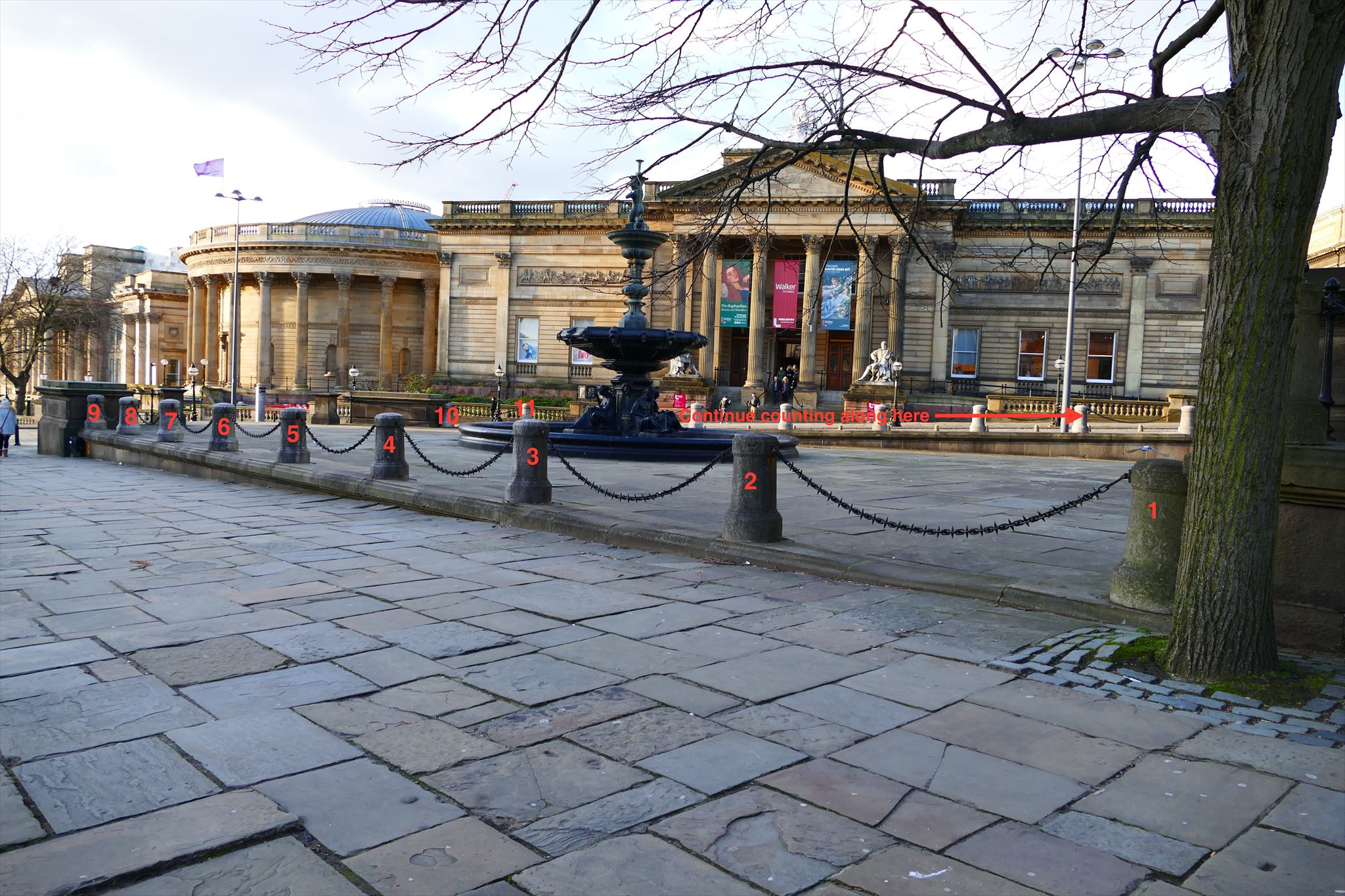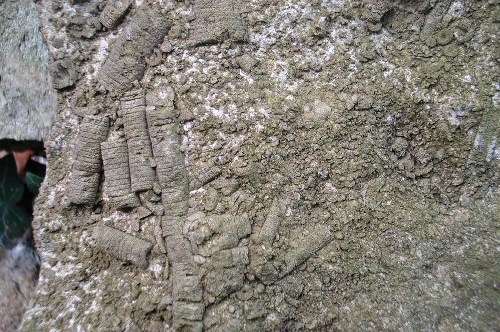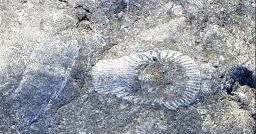
Wellington's Column stands on the corner of William Brown Street and Lime Street in Liverpool's cultural distract. The bollards around the column are made of nodular limestone from North Wales, which is quite different in appearance to the Darley Dale limestone from which the column itself is constructed.
In the lower area around the fountain, (down the steps from the column) a number of fossils can be seen in several bollards. The bollards are made of carboniferous limestone, formed around 350 million years ago.
Carboniferous Limestone is a sedimentary rock made of calcium carbonate. It is generally light-grey in colour, and is hard. It was formed in warm, shallow tropical seas teeming with life. The rock is made up of the shells and hard parts of millions of sea creatures, some up to 30cm in length, encased in carbonate mud. Fossil corals, brachiopod and crinoids are very much in evidence as components of Carboniferous Limestone; indeed the rock is full of fossils.
Typical fossils found in limestone:

Brachiopod fossils

Crinoid fossils

Fossil coral
Your tasks
To log this cache, you will need to complete the tasks below. You can use information from the cache page and your observations at GZ to do this. Please email or message us with the info (rather than post it on your log). Our email address is on our profile page. You can log a find once we have been sent an email/message; there is no need to wait for a reply. We may delete your log if your answer is way off the mark.
Come down the steps from the column, standing with the column behind you and the fountain in front of you. In the lower area, number the columns starting with the one nearest the tree (number 1) and moving round clockwise.
- Examine the inward facing parts of the bollards. Which of the three types of fossil can you see? Which is most common?
- Describe the biggest fossil you can find. Is it a brachiopod, a crinoid or a coral? Which bollard is it in? (Numbered from near the steps)
- Describe the general appearance of the limestone in the bollards. How does it differ from the limestone used for the column. Why do you think the column was built from a different type of limestone?
- As an optional extra, post a picture of yourself and / or your GPS with Wellington's Column in the background.